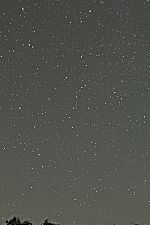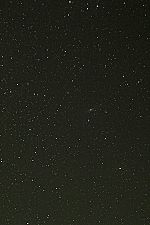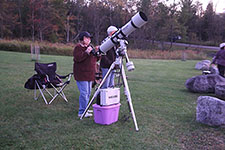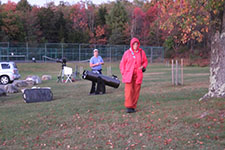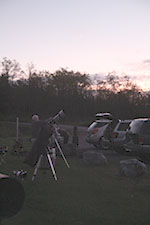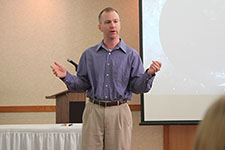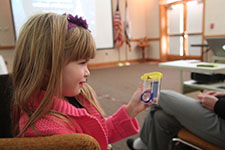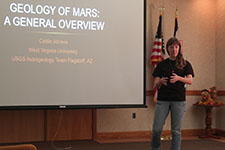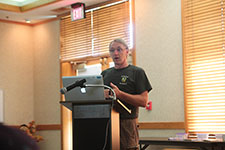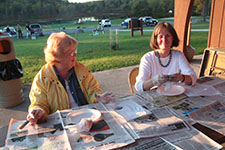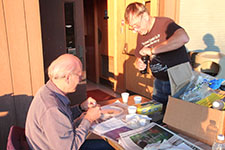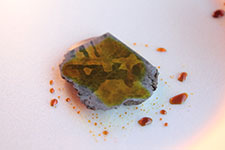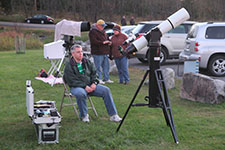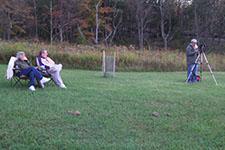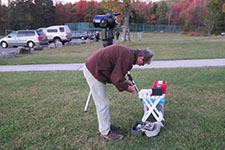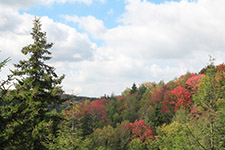The weather was promising for the Friday night star party--it was cloudy as I headed
to Blackwater Brewing Company for dinner but the National Weather
Service and the Clear Sky Chart all insisted skies would clear up by
nightfall. I was extremely disappointed by dinner at BBC--the
service was poor and the menu was incredibly limited. But the
Helles Bock beer was good and I took a growler of it back to my room.
I was nervous about the star parties both nights. I had
emergency back surgery in July and was having difficulty walking or even
standing for long periods of time. The only equipment I brought
was my little iOptron mount, my 80 mm ShortTube refractor, my 60Da
camera with some of my old screw-mount lenses, and the necessary
eyepieces. I wanted to photograph Kemble's Cascade, but I wasn't
sure whether the mount could tolerate the load of the scope with a
piggyback camera, and I wasn't sure how the images would look being
taken on an alt-az mount. Once I finally managed to get the
clutch really tight I discovered I could easily take 30-second
exposures and still have nice tight round stars, at least with a 135 mm
lens. I spent the evening taking pictures in the region near the
Cascade. A sample is shown at the right. I'm
embarrassed to admit that I didn't really look for the Cascade. I
was rapidly becoming fatigued and I wanted to get up early the next
morning to look for Comet ISON. So having found that I could get
sharp images, I packed up and went back to the lodge. I was in
bed by 11:30. I learned the next day that I missed a spectacular
fireball that occurred around 11:25. Mark "Indy" Kochte, who
would be the keynote speaker on Saturday, had set up a camera to take
images for a time lapse movie and he captured the fireball over
Pendleton Lake. The pictures below show some of the scopes at the Friday star party and Indy's image of the fireball. | 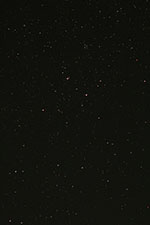 |
| I
got up at 5 AM Saturday morning and drove to the Nature Center to look
for Comet ISON. Alas, I was only one there. After I got
everything set up, I discovered that the batteries were dying in the
iOpton, so the mount was not tracking well. (I had considered
bringing a car battery with me, but it was too heavy...) I looked
for the comet near Mars in the ShortTube and my 9 x 63 binoculars and
could not see it. The pictures looked awful, so I glumly packed
everything up and headed back to the lodge for breakfast. A week
later, while looking at the images, I thought I had actually captured
the comet. But CAC member Steve Vincent alerted me that it
might be a galaxy, so
I studied my Cartes du Ciel chart for early Saturday morning and
discovered to my dismay that the fuzzy is actually NGC2903. It's
in the
circle on the far left side of the image to the right. ISON
should be
roughly in the circle near the star close to Mars, which is the red
smear in the lower right corner. (There does appeart to be a very
faint object in the circle, but it's easier to see in a negative image.)
According to Cartes du Ciel, 2903 has a total brightness of
magnitude 9, so ISON must be considerably fainter than that. | 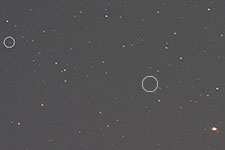 |
